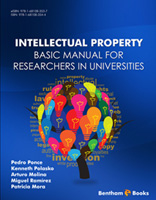Review 1
Book Review: Reshaping Universities for Survival in the 21st Century
There had been very few books written about universities. Most books on universities were very specialised, written in technical or esoteric jargons, focused narrowly on specific academic matters or had a particular political agenda in mind. That is what made Reshaping Universities for Survival in the 21st Century: New Opportunities and Paradigms by Chow and Leung so different. It was written for both the general public and university insiders, providing the readers a big-picture view of the university environment. It gave an overview of the core missions of universities from past to present, and explained how the traditional university had become commercialised, marketised and corporatised.
Backed by substantive references, the book presented a comprehensive and compelling account of the current landscape of our universities. The writing was impartial and balanced, clearly describing the challenges which had affected universities in the last few decades. I have personally found the book very informative. While some of the terminologies were vaguely familiar to the academic communities, I had no idea how many of the phenomena came about.
The truth was that universities were no longer revered as ivory towers as they once were. The book opened dramatically with the title “Skyfall: Universities in Crisis?” followed with headlines predicting the downfall of universities. For example, Peter Drucker, one of the founders of modern management theory and practice, had argued that, just about a decade from now (2027), “the big university campuses will be relics. “Universities won’t survive.” A report from the UK Institute of Public Policy Research informed us that the university model was broken: “Unless universities are transformed, an avalanche will sweep the system away.” Again, the Economist warned that “a cost crisis, changing labour markets and new technology will turn an old institution on its head”.
Strangely enough, there had been no responses whatsoever from the university communities countering such claims until this book. The authors boldly laid out the problems right from the start: inadequate funding by governments; marketisation of the higher education system; global competition; loss of monopoly; disruptive technology; rise of the MOOCS; escalating costs in university education; ballooning student debts; and falling “wage premium” for graduates.
The authors demonstrated a real understanding of the challenges. From the globalisation of finance and human resource to the disruptive digital revolution, they elucidated how these converging trends posed critical challenges for universities. Factors such as neoliberalism, marketisation and global competition undermined the monopoly previously enjoyed by universities. The emergence of disruptive technology and the current attitude of national governments towards university funding threatened the survival of this centuries-old tradition of higher education.
The book was written in easy-to-understand language but some non-academic readers would find the constant references exasperating, though this is a strict requirement in serious writing in order to validate the authors’ claims by referring to documented evidence.
The book consisted of six chapters. The first chapter detailed the global challenges which have affected universities in the last few decades – from globalisation to the rise of knowledge economy and the digital revolution. It explained how ideologies such as neoliberalism collided with the traditional idea of universities. It examined the impact of global trends on universities in the 21st century, such as university rankings, competition for funding, corporatisation, and the threat of new entrants into the market. The chapter also provided a snapshot of the changing landscape in higher education including the exponential growth in student enrollments, and changing societal expectations.
Chapter Two went into greater details signposted in Chapter One. It explained how the increasingly knowledge-driven global economy had made university education ever more important and the need for lifelong learning. It elaborated on how universities increased their student enrollments and expanded their global footprint. The readers were also able to gain an understanding of the unintended consequences such as escalating tuition fees, graduate unemployment and rising student debts, partly as a result of the trends of marketisation and competition.
Chapter Three was devoted to international university rankings which would be of interest to many readers. It made comparison of the various ranking methodologies – ranking criteria, weightings, proxies for quality, choice of indicators, data sources, and use of surveys, and it questioned the validity of some of these measurements over a short timeframe to accurately measure university performance.
Chapter Four had a title that was on every reader’s mind – Would Watson be the Next Professor? It gave details on the explosive increase in the creation of data in recent decades. While search engines helped to narrow down the right kind of knowledge on the internet, the ability to produce answers from them still required considerable human judgment. The chapter examined the possibility of developing an automatic system which would be able to answer questions, and so replace the role of the human lecturer. Even though the Massive Open Online Courses had the advantages of ubiquitous ‘anytime’ learning, they lacked the capability to fully replace the conventional physical lecture room with its face-to-face interaction and hands-on laboratory experiments.
Chapter Five came to the nub of the book, academic capitalism, and the root of many of the universities’ problems. As students were increasingly viewed as customers, academic education was reduced to student satisfaction surveys, quality control, performance measures, quantification of student experience, and ranking and league tables. Commodification of education also led to standardisation, formulaic teaching, and turning intellectual rigour into customer service. At the same time, universities had embraced the market logic of growth, competition and commercial techniques in promoting and encouraging academic capitalism and entrepreneurship. As a result of declining public funding, universities engaged in market-like efforts to obtain external funds such as recruitment of more fee-paying students. However, the profit motive had become increasingly explicit and central in institutional strategy. Revenue became the priority, and top-down management had displaced academic self-governance.
In the concluding chapter, the authors argued that the current university model is broken, but universities continued to use the ancient elite model for mass education in the 21st century. The authors offered some innovative advice of incorporating contemporary business strategies and technologies to reshape universities, such as Steve Jobs’ “staying focused, making sure functions are seamlessly integrated, and always innovating and advancing”. Other advice includes technology leadership; benefit from neuroscience research; getting into the top 10; expanding the global footprint. Importantly, the writers emphasised that universities had to create real value for students – equipping them with employable skills to be entrepreneurial, innovative, and adaptable in the volatile job market. Above all, universities should get leaner and more productive with administrative efficiency and flexible governance structure that encourages innovation. The authors argued powerfully that universities need to transform their old business model to meet the challenges of the 21st century. While many of the ideas were excellent and probably very effective, the book offered little details on how to execute these strategies. The truth is that universities are not short of good ideas. What they lack are will power and leadership that can help transform the culture – a culture that is innately skeptical about new ideas and change. From the faculty perspective, university leaders have so far failed miserably to provide the compelling case for change and this book has gone a long way to explaining this. Unfortunately, the authors had not delved deep enough to unearth the leadership issue which is critical if universities were to transform into 21st century learning institutions.
Overall, the book has made an invaluable contribution to the current debate surrounding university funding. At the beginning of the 21st century, it is timely to think about the real purpose of universities and their place in history. This book is a must-read for anyone who studies or works in the higher education sector.
Professor Alfredo Milani
Dept. of Mathematics & Computer Science
University of Perugia
Italy









